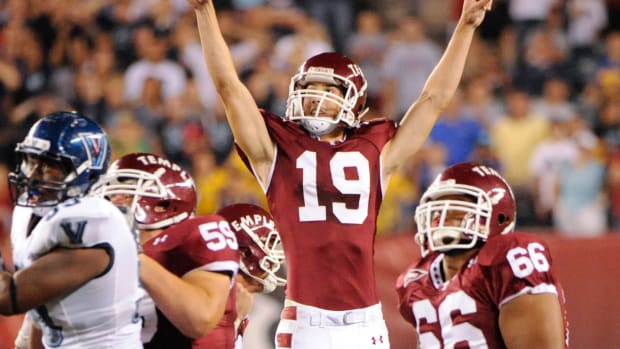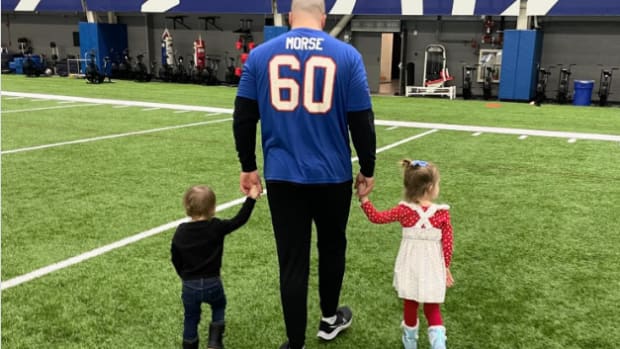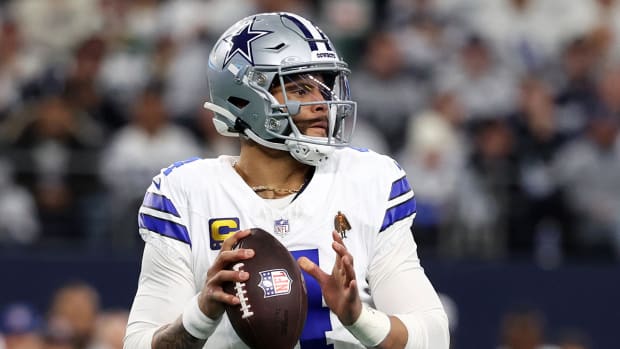Forced Training Camp Changes Could Adjust Jaguars' Future Plans
Head coach Doug Marrone and the Jacksonville Jaguars’ hand may have been forced, but as a result, they’ve found a different and potentially better way of doing things.
The advent of COVID-19 has forced clubs across the NFL to change their approach to training camp. Athletes are famously driven by rigid schedules, so flipping their entire preparation on its head was met with understandable trepidation and wariness.
Now almost two weeks into players being on the field, Marrone is finding aspects of this new camp that work so well, they could shape the future.
“I'm very happy with the way the week's going. I think, you know, sometimes when you do these things you're almost forced," Marrone said during a virtual press conference on Thursday.
The Jaguars were forced into finding alternative ways of conducting training camp due to the pandemic, but the biggest change came on an elective choice. Marrone and staff elected to keep their training camp roster at 90, as opposed to dropping to 80 players, giving the coaches more time to see guys on the field after an offseason spent on a computer. Teams will have to cut down the roster on August 17, but until then, staying at 90 was a no brainer for Marrone.

While other NFL teams have cut down their roster, the Jags elected to stay at 90. Mandatory Credit: Douglas DeFelice-USA TODAY Sports
“This is by far the toughest time to, for someone like you said, you know, make this football team because the opportunity is going to be extremely limited. And it's a shame because—we’re gonna miss out on the greatest stories; in my mind the greatest stories to me is a guy that's been working, and all of a sudden comes out for the team tryout that's open to anyone. He tries out he's got something, you know, the odds are stacked against them. And all of a sudden he makes it and not only does he make it, he winds up thriving and we've seen this throughout the history.
“And we're gonna — whether we like it or not or whether we think we're experts in evaluating people — we’re gonna lose a little bit of that and, and I don't know maybe that's deep, maybe I'm looking to0 far into it, you know, but I think that's sad.
“As long as you have an opportunity, it may not work out well, it may not even be fair, but at least there’s an opportunity to at least show something. So immediately when it came out to 90 or 80, I didn't even blink an eye. I was like I'm going to 90. I just feel like it's just an important thing for me and what I believe is the right thing to do. And then, I think it's right for our team also, obviously.
“So I've talked to a lot of these players about these difficult decisions and how hard it's going to be and, you know, we may make these decisions and we may be wrong. You know, but if it's important for you to continue your career you keep, keep training. This year is so different, you know than any year in the past.”
Marrone explained to reporters last week that the larger roster number was in part possible to the Jaguars practicing out of their stadium. The extra locker rooms (four total) meant they could split guys up and allow for social distancing. But it also meant that practices on the field had to be split as well.
Rookies—who returned a week earlier than veterans—were started on walk-throughs and conditioning. Once veterans returned on July 28, they began those same Phase 1 activities. To keep the numbers where they needed to be, coaches keep the 30 member rookie class together and moved them to Phase 2 of training camp, as opposed to mixing them with the veterans as would normally be the case.
Typically doing so would distract coaches away from rookies that might have caught their eye during mini-camp.
“Normally what happens is you have the rookie minicamp and you get a lot of reps and then when the rookies get, you know, put back into with your whole football team, you know, then imagine—then, then their exposure gets reduced so much.”
Without preseason games, the “ramp-up” period to the regular season kick off has been extended, meaning training camp can be stretched over more weeks, allowing for more time to keep them separated. Unless the NFLPA gets their way, that extra time won’t be present next year. Still, the possibility of keeping the two groups—rookies and veterans—separate for as long as possible is something Marrone sees as a game-changer for future camps.
"It's been really beneficial for us because we've been getting a lot of reps with the young guys you know, and really that's what you're looking to do…[so] that’s been something that I kind of have in the back of my mind that in the future, you know, this is not a bad way to start your offseason, you know, with the way we're doing it. I think it's beneficial. I also think that the players have been really compliant and trying to do all the right things with the rules and protocols that are in place and I think, you know, that was my biggest goal.”
When forced to change and adapt, we often find a new way of doing things. In a way, that’s necessary for survival, no matter the situation. So while the Jacksonville Jaguars and NFL’s hand may have been forced, if Doug Marrone is right, future players will be better off as a result.




